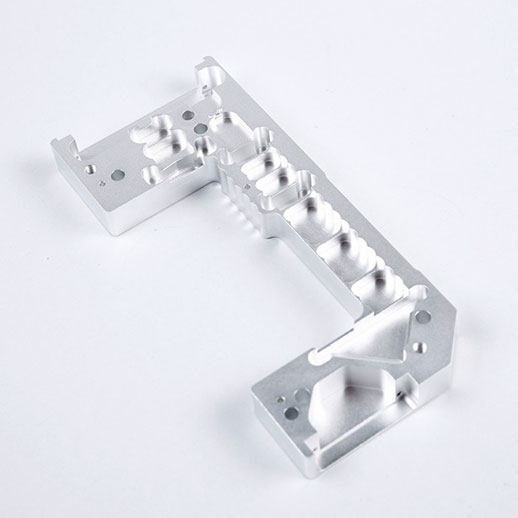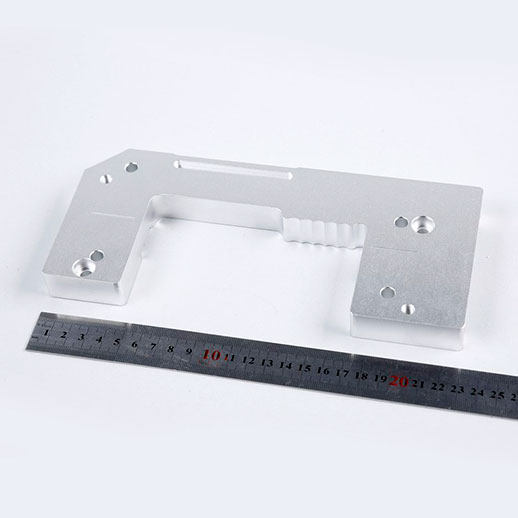CNC Milling Aluminum Parts 6061-T6
- Identification of Product: P003
- Size: 230*100*20(mm)
- Material: Al6061-T6
- Process: CNC milling
- CNC machining process: raw material → milling → drilling → sandblasting and anodized
- Surface Finishing: sandblasting + natural color conductive anodized
- Weight: 3.73KG
- Features: The inner cavity is thin-walled, and the flatness in the length direction is required to be 0.03. No scratch allowed on the surface.
Description
Capabilities of CNC Milling Aluminum Parts 6061-T6
- Raw material – Al6061-T6 aluminum alloy plate
- Equipment – 3-axis CNC machine
- Cutting tools – Milling cutters, drills, taps, precision reamers, etc.
- Machining process – Blanking on-demand→CNC roughing→CNC finishing→edge burr treatment
- Testing tools and equipment – Three-coordinate, digital display vernier caliper, threaded plug gauge
- Surface finishing treatment – Sandblasting natural color conductive anodized, film thickness 20μm
- Packing – 5-layer corrugated paper outer box + bubble bag + pearl sponge
Definition of CNC Milling
CNC milling, or Computer Numerical Control Milling, is a machining process that employs computer-controlled and rotating multipoint cutting tools to gradually remove material from a workpiece and produce a custom-designed part or product.
The process is suitable for machining a variety of materials such as metal, plastic, wood, and producing a variety of custom-designed parts and products. Multiple functions are available under the umbrella of precision CNC machining services, including mechanical, chemical, electrical, and thermal machining.
CNC milling is a mechanical process that includes drilling, turning, and various other machining processes, which means that material is removed from a workpiece by mechanical means, such as the action of a milling machine’s cutting tool.
Definition of Aluminum 6061-T6
Aluminum 6061-T6: Indicates that the aluminum alloy belongs to the sixth category of aluminum alloys, that is, aluminum-magnesium-silicon aluminum alloys, and has undergone solution heat treatment and artificial aging treatment: T6.
Among them, T6 indicates that the aluminum alloy has used tempering heat treatment.
The heat treatment is divided into two steps, the first step is to heat the alloy, and the second step is effective treatment. In the first step, the aluminum alloy is put into a constant temperature of about 527°C and kept for about 1 hour, in order to dissolve the alloying elements in the aluminum alloy and distribute them uniformly in the aluminum. After taking it out, it is quickly quenched in cold water. The purpose of quenching is to keep the alloy elements such as magnesium and silicon in a fixed position. Because if the part is cooled slowly, alloying element precipitation usually occurs.
The second step, aging treatment, is to reheat the workpiece to 177 ° C and keep it for 1-18 hours (the specific holding time is determined according to the size, shape, application, and other factors of the workpiece). The purpose of this step is to precipitate the hardening element Mg2Si to enhance the strength of the aluminum alloy.





